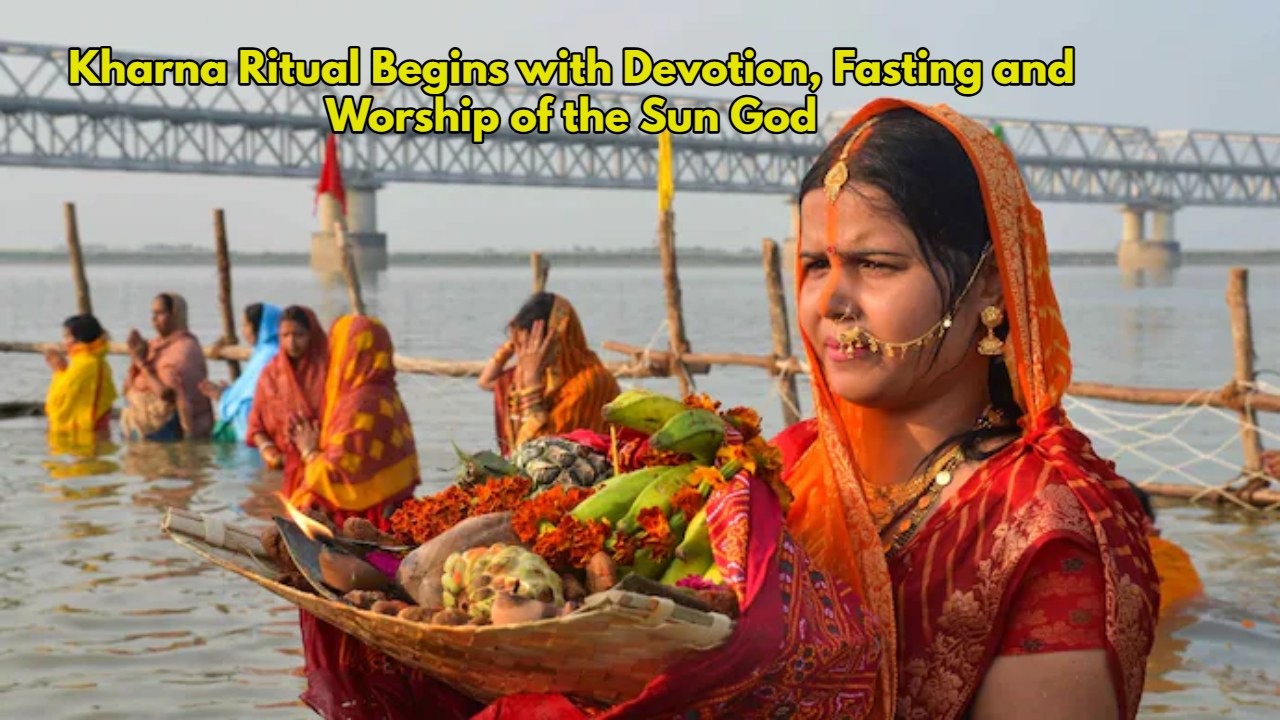Chhath Puja 2025: Chhath, the grand festival of folk faith, has begun across the country amid an atmosphere of reverence and devotion. The four-day ritual began on Saturday with Nahay-Khaay. From early morning, fasting women and men gathered at the banks of the Ganga, Son, Kosi, and other rivers to bathe. After taking a dip of faith in the water, they worshipped Lord Bhaskar (Sun God) and Chhathi Maiya. As offerings during Nahay-Khaay, devotees consumed pumpkin rice, gram dal, and gooseberry chutney, considered a symbol of purity and simplicity. With this, devotees pledged to endure a rigorous four-day penance.
Kharna Today: A Day of Purity and Restraint
Sunday is the second and most special day of the Chhath festival—Kharna. It is called the heart of the fast, as devotees begin a 36-hour waterless fast. From early morning, devotees begin cleaning their homes and courtyards. Earthen stoves are made, mango wood is prepared as fuel, and the sweet aroma of jaggery and rice spreads through every home.
According to astrologer P.K. Yug, Kharna Prasad is customary to be consumed after sunset. In Bihar and eastern India, sunset on Sundays is after 5:11 p.m. At this time, devotees prepare Prasad and offer it to the Sun God and Chhathi Maiya. Only then will they consume it and observe a Nirjala fast until the next day, during which the consumption of food and water is completely prohibited.
Kharna Prasad and Its Spiritual Meaning
The Prasad prepared on Kharna day is not only a symbol of taste but also of faith. Devotees prepare jaggery kheer—a wonderful combination of milk, raw rice, and jaggery. Wheat bread or puris and bananas are also included in the Prasad. After the puja, this Prasad is first offered to the Sun God and Chhathi Maiya, then the devotees consume it. From this moment, their Nirjala fast begins, which continues until sunset the next day.
The Kharna Prasad is not limited to the fasting person alone. It is distributed among family, relatives, and neighbors. Sharing this Prasad is believed to bring happiness, prosperity, and harmony to the home.
The Scientific and Spiritual Confluence of Chhath Puja
Chhath is not merely a religious ritual, but a festival of expressing gratitude to nature, the sun, and the water element. On this day, devotees not only purify their bodies and minds but also ensure the purity of the environment. From Nahay-Khay to Kharna and Sandhya-Arghya, each stage reflects the importance of solar energy. Considering the sun as the foundation of life, this festival has become a unique confluence of faith and science.
The Importance of Worship and Tradition
Special rituals are followed during the Kharna Puja. Vratis bathes in the morning and takes a vow to observe the fast. Prasad is prepared in the evening, just after sunset. After worshipping Lord Surya and Chhathi Mata, the offerings are made and consumed. It is said that this ritual brings happiness and prosperity to the family and fulfills all wishes.
Filled with faith, the Ghats and the Festival of Devotion
During the Chhath festival, devotees throng the ghats in Bihar, Jharkhand, eastern Uttar Pradesh, and the Terai region of Nepal. Women, dressed in traditional saris and carrying dauras on their heads, are seen singing songs and worshipping the Sun. Chhath songs echo in every home—hymns like “Kelwa je pharaela ghavad se, o dhaniya…” fill the atmosphere with devotion.
The Spirit of Chhath: A Festival of Self-Reliance and Dedication
Chhath is not just a religious celebration, but a symbol of self-restraint, cleanliness, and responsibility to the environment. Beginning with Nahai-Khaai and ending with offering arghya to the rising sun, this festival highlights the deep connection between humanity and nature. The night of Kharna is an important milestone in this journey, where devotees reach the heights of self-purification, sacrifice, and faith.
